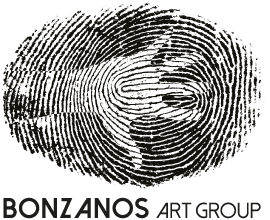“Original subjects” by Maurizio Sciaccaluga
"Original subjects" by Maurizio Sciaccaluga
Almost theatrical representation of a collective condition of loneliness and estrangement, conscious and scenographic reflection about the ineluctability of destiny and the events that contribute to determining it, Stefano Bonzano’s paintings fully respect the times and ways of cinematographic scanning, presenting themselves as original subjects on which to base the construction of a possible film narrative.
Colours, shades, brushstrokes and figurations obey the laws of photography and montage, force the scenic space of the painting – otherwise delimited – and present the creation as a suspended moment, a frame waiting for a final still far from the future.
Pursuing subversive and unusual shots, preventing a real and non-fictitious search of the third dimension with backdrops and backdrops, organizing the environment as a stage and space as time, the artist pursues and analyzes the fiction and the staging, the interpretation of loneliness rather than isolation itself, the spectacular rendition of melancholy rather than real sadness and apathy. Bonzano’s pictorialism is paradoxically metatheatrical, cinema for cinema, therefore less distant from Hamlet – the Prince of Denmark looks at himself and his own events, of which he is director and screenwriter, re-proposed by the company of comedians – who purely from contemporary research artistic.
Stefano builds paintings from which he abruptly abstracts, calling himself out of them, and then watching himself act within them while transforming «subjectivity» into «sequence shot» and subsequently – always gradually – the «American plan» in «panel».
Author of the painting, the artist is – in the manner of Pirandello – also a character and protagonist at the same time, so he now coldly reflects about the opportunities he had and lost, the touched and missed contacts, the parallel and unjustified silences.
Meanwhile, he traces a path – probably unconscious – through a collective imaginary heritage, borrowing situations and affections from the contemporary world of entertainment: the final scenes (the contact just mentioned) of 2001: A Space Odyssey and Close Encounters of the Third Kind, the realization at Chinese boxes of Le charme discret de la bourgeoisie, the typical interlocking structure of The Killing and Quentin Tarantino’s films, the disturbing and labyrinthine omens of The Shining and certain anguished atmospheres of Metropolis and Modern Times return cyclically reworked in the works of the Piedmontese painter. In one work – a stepped stage where figures abysmally distant from each other, separated by small sides – one can even read the pallor and passion of the fleeting encounter between Gene Kelly and Cyd Charisse in the only modernist-style number of Singin’ in the rain.
Bonzano does not just represent the lack of communication and indifference between individuals; rather, he points out the jokes necessary to communicate said lack of communication to the public, underlines the stage movements aimed at making the dissatisfaction known, carefully searches for the effect and the event (even in the form of a missed event).
His works are Teatro dell’Assurdo elevated to double power, they are Ben and Gus who look at the staging of Pinter’s Il Calapranzi, they are director’s notes that explain how to move between the twists and turns of the scenes and takes.
Works in progress, equipped as drafts of the screenplay and not as completed universes, the canvases represented here tell and deal with the labyrinths of the elaboration of thought and mental construction, as well as those of passion and unrequited desire; preferring like the eye of the camera the moment of disillusionment and renunciation, they propose the silent cry of the lonely and trapped man, the screamed silence of the mass who are prevented from choosing or fleeing.
Between rigid, rational, essential and symmetrical architectural constructions – which assiduously remind us of the existence of an inevitable and blind, bad destiny – each individual is invited to present himself to the public with dignity and resignation, imploring an Author who renders history and past to his character.
Otherwise, it will remain, shadow and shape without thickness, only the mask of defeat and of a never born narrative.
Maurizio Sciaccaluga
Genoa, January 1995
